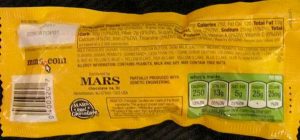Now, courtesy of Congress, our non-legislating legislature, we might soon be buying non-label labeled food.
Congress reached this state of higher non-ness by carefully noting what the American public overwhelmingly and repeatedly has said it wants—country of origin labeling (COOL) for meat and poultry and the labeling of all food that contains ingredients derived from genetically modified organisms (GMOs)—before choosing to do just the opposite.
In 2015, the U.S. House of Representatives tackled the public’s GMO labeling demand by punting; it voted 275-to-150 in favor of voluntary GMO labeling. In the Land of Non, voluntary labeling means, of course, almost everyone will voluntarily not label food that contains GMOs.
Not to be outdone by the non-labeling labelers in the House, the U.S. Senate finally [passed]…a mandatory labeling standard—albeit one with more dodges in it than a used car lot. The shiniest clunker is something the Senate chose to call the “bioengineered food disclosure system.”
The name alone is certain evidence that Big Food’s lawyers and Big Ag’s lobbyists have already washed, rinsed, and waxed the pending bill to ensure it contains the highest possible level of effective ineffectiveness. With this outside help, anti-government government insiders reshaped the Senate bill into pure shapelessness.
His analysis is well worth reading. It concludes:
But that’s the trick in running a non-legislating legislature, right? If you actually do anything, it must—by definition—end up doing exactly nothing.
As I’ve posted previously, some companies have already put GMO labels on their products and neither their nor our world has come to an end.

The only reason not to do this is because of industry opposition—politics.
And to summarize the politics:
- The industry says: if GMOs are safe, they are totally acceptable.
- Others say: even if GMOs are safe (and questions remain), there are other reasons to be concerned about them.
The food industry is always talking about consumer choice. So how about giving consumers a real choice, not one that depends on bar codes and cell phones. Mr. Guebart’s analysis is spot on.

